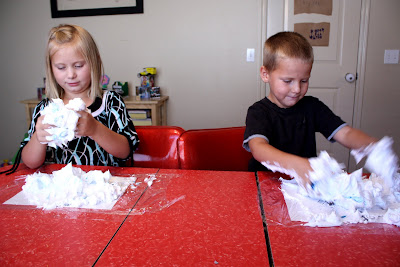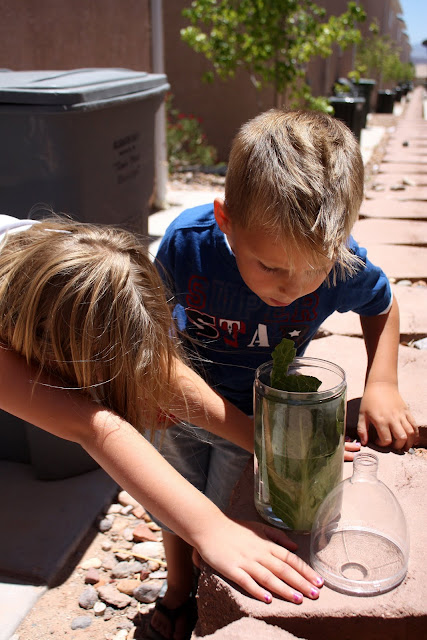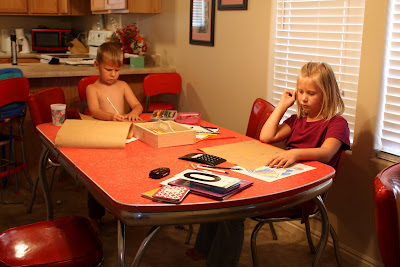What they knew:
Hannah: It powers up things. It can electrocute you. It can cause sparks.
Seth: It can be used for lights, flashlights, cameras...it makes lights work.
We covered:
- atoms: what makes up an atom, protons, neutrons, electrons, and the nucleus. we talked about charges, both positive and negative, the number of protons determines the type of atom.
- molecules: made up of atoms bonding together
- electricity: the flow of electrical charge...basically electrons on the move
- circuits: giving the electrons a path to follow, forcing electricity to the areas we need it
- we talked about he role Benjamin Franklin and Thomas Edison played in the development of modern electricity
- we talked about sources of power, natural, chemical, man-made, etc.
- we talked about how we kept our homes light and warm before electricity
- visible forms of electricity: lightning, sparks, etc.
- volts, amps, and watts...how to find these measurements on things in our environment, batteries, power boxes, etc. we talked about how voltage changes from a battery to a plug, to a lightning strike
- SAFETY! We walked outside and looked at the warnings on the power box next to our house, looked at the voltage warnings, etc.
- static electricity
- conductive materials, and insulators.
First we made molecules using marshmallows as the atoms, and toothpicks as the bonds. We viewed pictures of molecules on the internet as inspiration.
Next we completed a few experiments. We tested static electricity with a balloon. We rubbed it on our hair, the carpet, and on a wool sweater. We rubbed it on the sweater and then picked up pieces of paper from the table.

Next we "made lightning". We got into our dark walk-in closet and rubbed the balloon on the sweater, and then held it in front of the doorknob. The electrons arced between the balloon and the doorknob, and sparked for just a second, but long enough to see it. We did this several times because the LOVED it!
The most exciting experiment, for them and for me as well, was the circuit. I was so proud because I was getting the stuff ready for school the night before, and it was late. Rick was in bed, and I knew I wanted to try this, but didn't know if I could make it work without his help. I know this is ridiculously easy, and as simple of a light circuit as you can make, but still...it was so thrilling to rummage through our junk tool drawers and come away with something that actually worked! It was just a couple of wires, a Christmas light, and a 9V battery. And provided all three kids with entertainment for the afternoon!
Hannah:

Seth:

Even MaKaty:

What they learned:
Hannah: Electricity is made out of electrons moving, there are different kinds of atoms, the best showing of electricity is lightning, you can make lightning sparks, electrons travel through wires, because they are attracted to it, tons of electrons move quickly to a place by finding somewhere to go and it makes electricity in that place.
Seth: There's different kinds, electrics travel from one side of the battery to the other, if they go through the light they make it light up, they don't go through plastic and stuff, we walked out and looked at the electric box, if you break through the box, you'll get electrocuted, electricity lights everything up and electricity travels through your body.
Well, that's the summer for us. I have really had fun with the kids doing these things this summer. But I admit, I probably won't do the blog anymore. I feel like it's just another thing to add to my "to-do" list, and I don't think it got a lot of use. So next summer we will still do our home school, I'm just taking the blog aspect out of it.
School starts tomorrow. Enjoy!









































